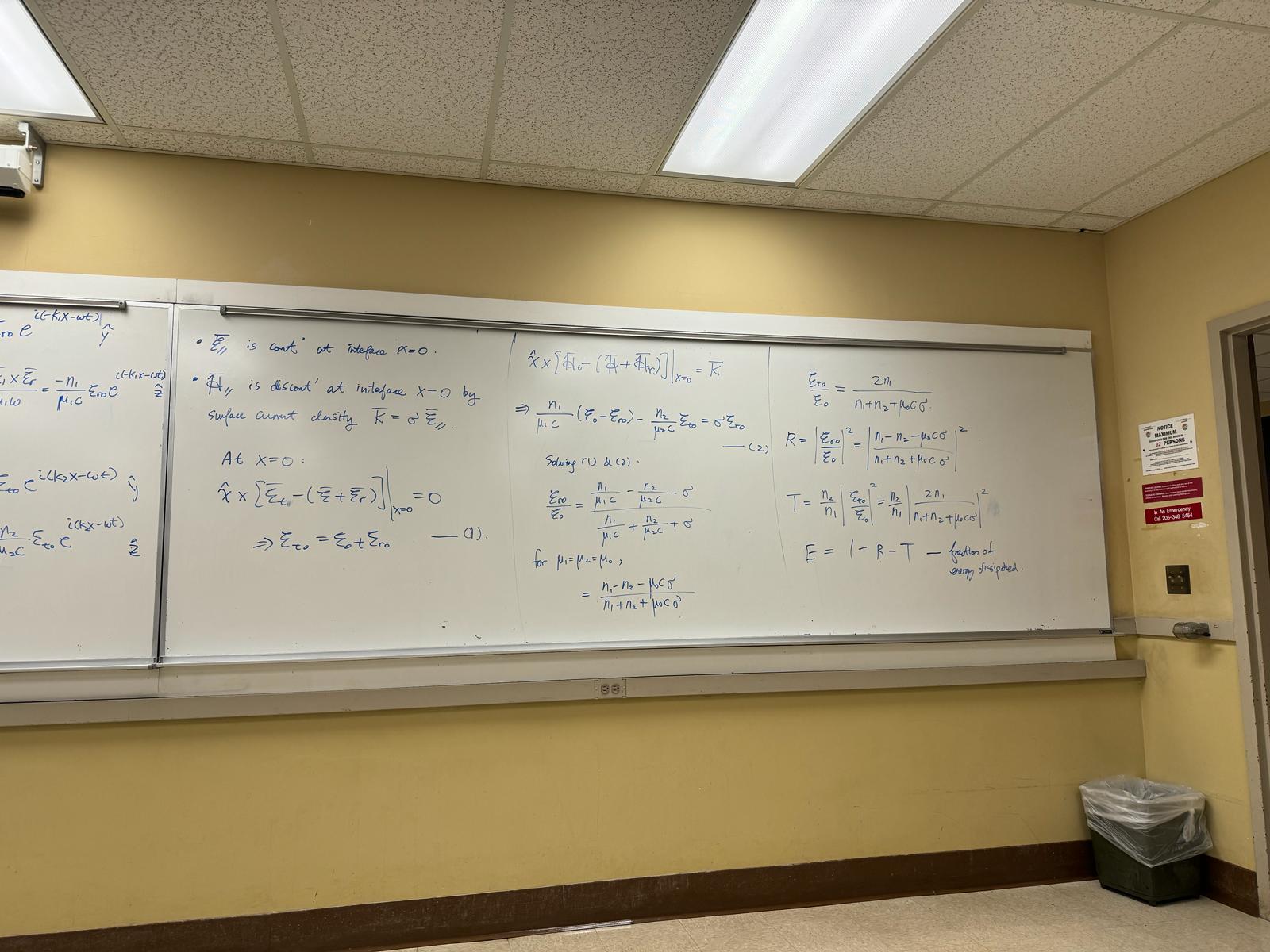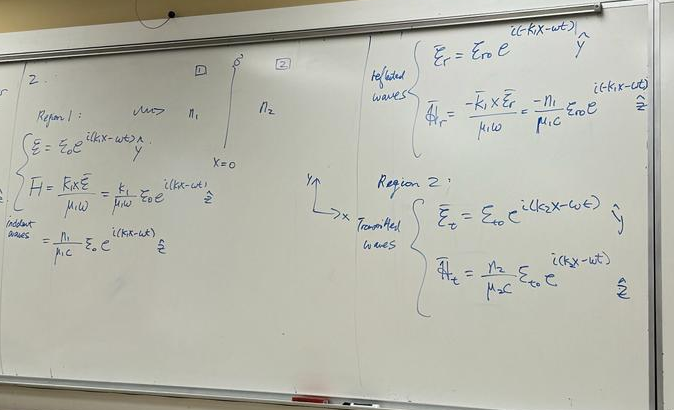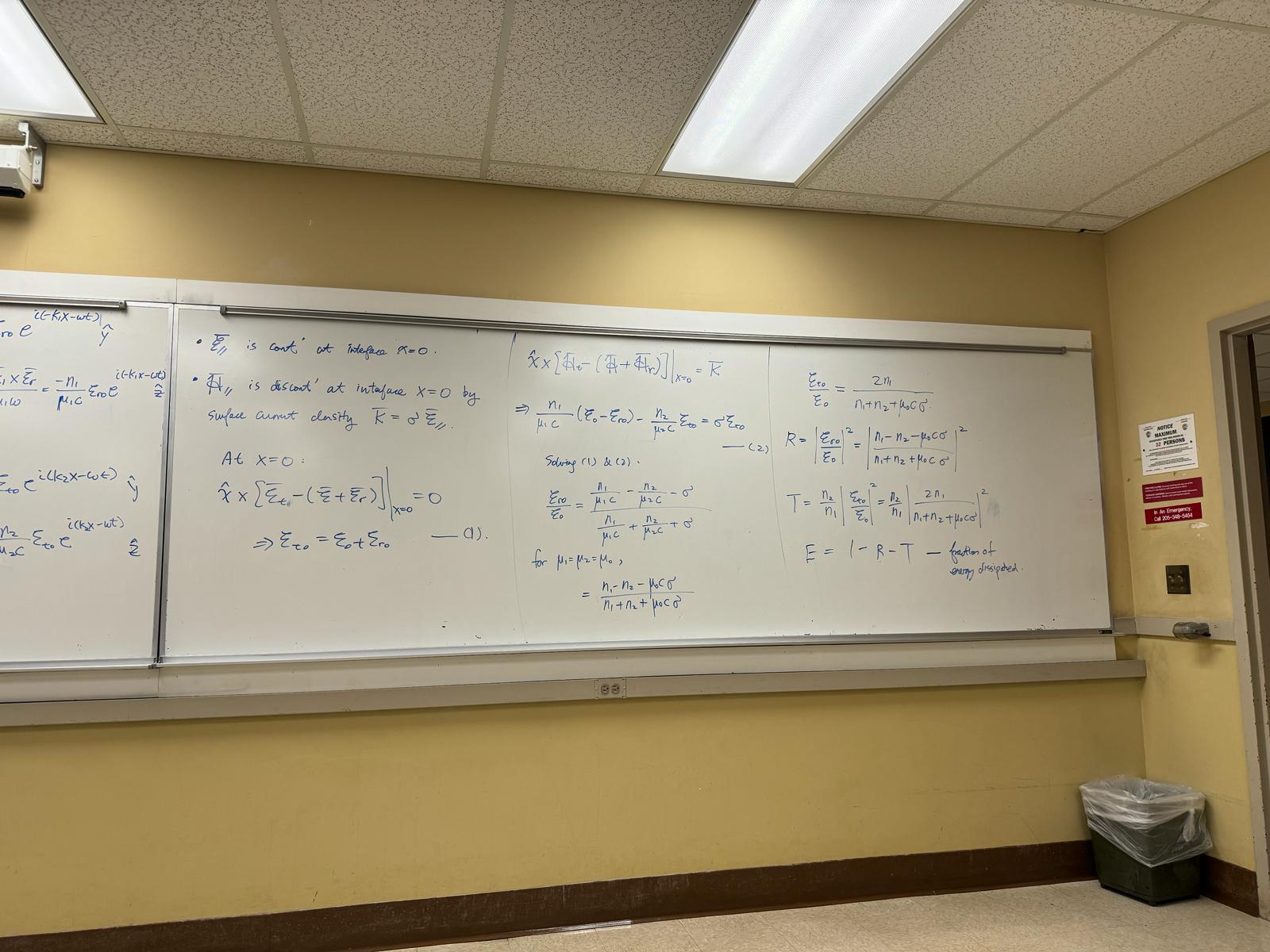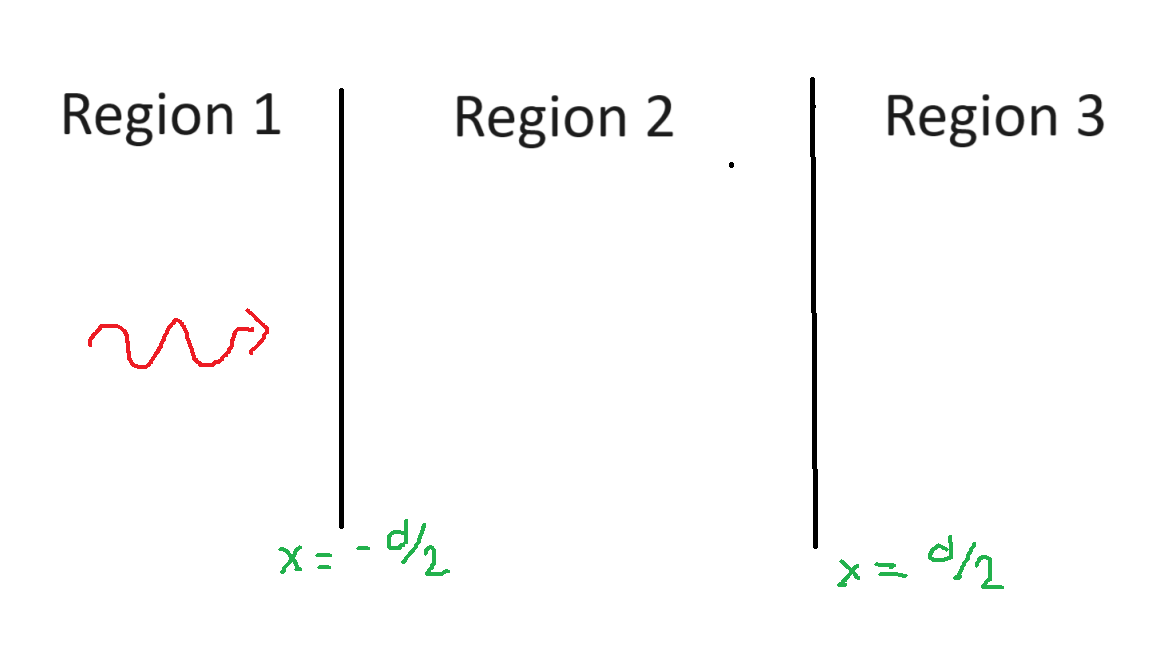Question
Consider a layered medium, which consists of three regions. Region i has a real, frequency-independent refractive index given by ni , where i = 1,


Consider a layered medium, which consists of three regions. Region i has a real, frequency-independent refractive index given by ni , where i = 1, 2, 3. The boundary interface between regions 1 and 2, which is located at x = ?d/2, is a resistive sheet of surface conductivity ?12. Likewise, the interface between regions 2 and 3 located at x = d/2 is another resistive sheet of conductivity ?23. The surface current density on a resistive sheet is given by Ohm's Law K = ?E?, where ? is the surface conductivity of the sheet and E? is the tangential component of the electric field at the surface. A plane wave is normally incident on the resistive sheet located at x = ?d/2 from region 1. This incident wave has an electric field amplitude E0 and is linearly polarized along the y-direction.
Hint: Consider the electromagnetic boundary conditions at the interface taking into account the presence of the resistive sheet. Note: All regions are non-magnetic with a magnetic permeability = 0.



Step by Step Solution
There are 3 Steps involved in it
Step: 1

Get Instant Access to Expert-Tailored Solutions
See step-by-step solutions with expert insights and AI powered tools for academic success
Step: 2

Step: 3

Ace Your Homework with AI
Get the answers you need in no time with our AI-driven, step-by-step assistance
Get Started


